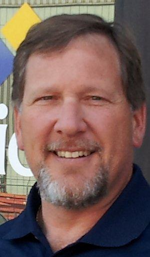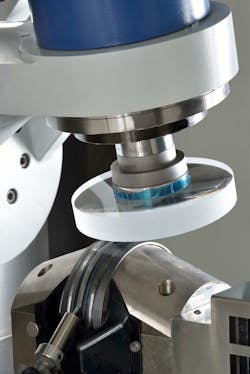MARKET INSIGHTS: Growing an optics manufacturing equipment business by offering services
Precision optics touch our lives in more ways than most of us know. These optics—large or small—continue to be produced by a relatively small industry that has changed relatively little over the past four centuries. Except in the case of lenses for cell phone cameras and other consumer applications where high volumes and price point require the use of techniques such as molding, precision optics continue to be made by grinding and polishing glass and other materials to challenging levels of figure and finish.
The introduction of computer numerical control (CNC) machines and other innovative technologies has advanced the precision optics manufacturing process. For instance, with the introduction of magnetorheological finishing (MRF) by QED Technologies in 1996, the finishing of precision optics became deterministic and predictable, and optics manufacturers could rely on shorter processing times and higher yields with consistent quality. QED’s subsequent introduction of the Subaperture Stitching Interferometer (SSI) in 2002 further enabled the manufacturing process by allowing manufacturers to see what they were polishing and use that information to drive further improvements.
These developments represent some of the watershed moments in precision optics manufacturing history. The manufacturing process became less focused on the traditional bottleneck, the artisan’s ability to perform the final finishing step, and more focused on improving the efficiency and consistency of the pre-finishing process. This allowed precision optics to be manufactured cost-effectively and predictably, and this newfound bandwidth allowed optics manufacturers to broaden their expertise, add new capabilities, focus on new applications, and win new business.
That said, despite the high value and potential return on investment these novel CNC machine-based technologies can bring, they still require a significant capital outlay. Companies eager to begin incorporating these technologies into their manufacturing process and gain new expertise are faced with a chicken-and-egg scenario: While you need the work to warrant the machine purchase, you also need the machine and know-how to win the work.
Thus, the industry has been divided into those who have these types of technologies in their toolbox and have the means to expand the breadth and depth of their offerings, and those who do not and also cannot compete as aggressively for market share. In reviewing this situation, we considered an alternative path to bridge the divide by making our CNC-based technologies, MRF finishing, and SSI metrology, as well as our engineering know-how, available to the optics manufacturing industry on a contract basis.
QED has always maintained and staffed a Demonstration Lab to give prospective customers a chance to evaluate the capabilities of the various equipment offerings prior to making a capital investment. Contract services have also been offered, although on an infrequent and informal basis and usually in support of an existing customer’s specific manufacturing challenge. In 2011, QED Technologies formalized this contract service by introducing QED Optics. From the beginning, QED’s plan for QED Optics was based on several primary tenets:
- Make QED’s MRF and SSI technologies available to the industry regardless of a particular company’s ability to make an investment in the technologies, thereby expanding the market addressable by MRF and SSI.
- Gain better insight into how QED’s technologies and machines are used by our customers, and feeding that knowledge into QED’s continuous improvement initiatives and new product development activities.
- Mitigate the volatility in the capital equipment market by adding a revenue stream not driven by machine sales.
QED Optics leveraged QED Technologies’ core competencies: expertise in MRF and SSI technologies and strengths in applications and engineering. This shift in strategy came with some risks, however: Would QED Optics compete with existing QED Technologies customers; for example, those who already owned MRF and SSI systems? Would there be a conflict between the QED Optics and QED Technologies businesses (a breach of ethics)? We felt that its role in expanding the overall market for optics measured with SSI and/or polished with MRF was important enough to warrant the risks.
The QED Optics approach is based on the premise that every optics manufacturer, whether or not they own MRF or SSI systems, can benefit from the technology as well as the knowledge and expertise QED Optics’ engineers offer. QED Optics’ customers not only have access to MRF and SSI technologies, but also can develop and test new processes and new applications working with QED Optics experts whose unique perspective goes beyond just understanding a specification.
This approach has proven successful and, as a result, QED Optics serves customers on both sides of the divide—those who own MRF and SSI systems and those who do not. This was proven in QED Optics’ first year of business, when the customers were for the most part evenly split between new customers and legacy QED Technologies customers. QED Optics was able to help both to expand capabilities and explore new markets with applications ranging from lenses for consumer and commercial cameras, corrector plates for research, and industrial lasers, to all manner of ground- and satellite-based telescope systems.
As expected, QED Optics staff gained new perspective by using MRF and SSI technologies the way their customers do; namely, in a production optics shop environment. This coupled with their extensive depth of knowledge of the respective technologies resulted in a number of continuous improvement opportunities that are likely to be applied to existing and future QED products.
Year one was an unqualified success, with QED Optics exceeding its business objectives and contributing significantly to the company’s bottom line. The relationships established in the first year or so have positioned QED Optics for continued success and growth in the future.

Mike DeMarco | Business Manager, QED Optics
Mike DeMarco, business manager for QED Optics (Rochester, NY), has spent over 25 years in the fields of precision optics manufacturing and optical system assembly and testing. He took over the management of QED Optics in 2011 after serving as QED Technologies’ sales manager since 2001. Prior to joining QED, he managed the Optical Assembly and Test Department for PerkinElmer and SVG Lithography Systems.
